Marshes are wetlands consisting of either freshwater or saltwater. Most of the marshes in the United States are on the eastern coast, from Maine to Florida and west to Texas along the Gulf Coast. If you’ve ever bird-watched in a marsh, you probably know some awe-inspiring creatures live there. Discover 12 impressive types of marsh birds, including where they live, what they eat, and how to identify them.
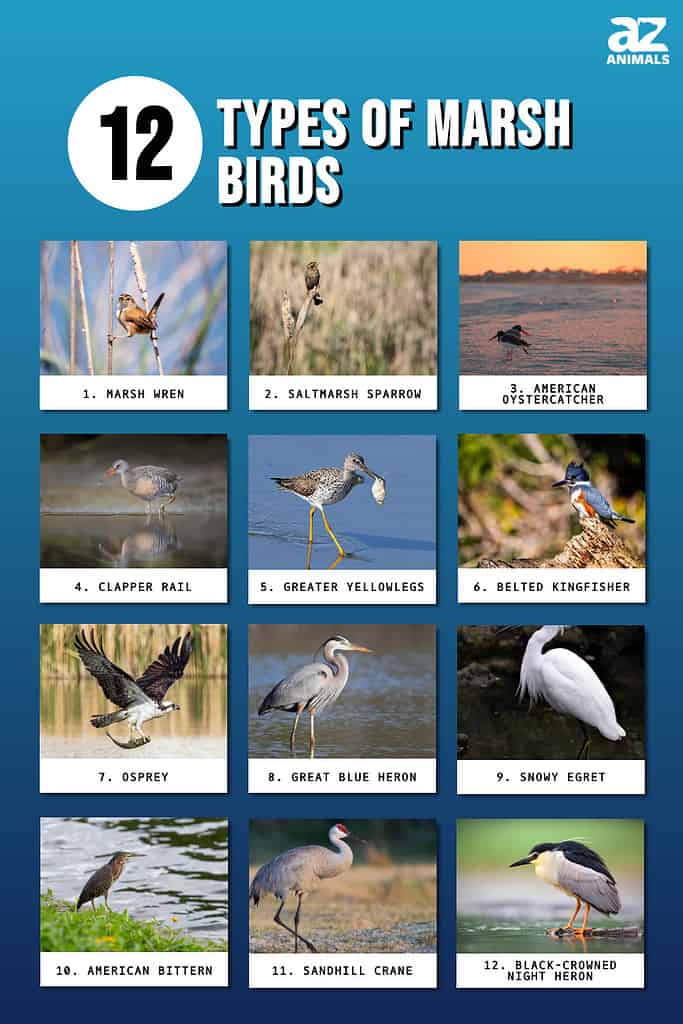
1. Marsh Wren
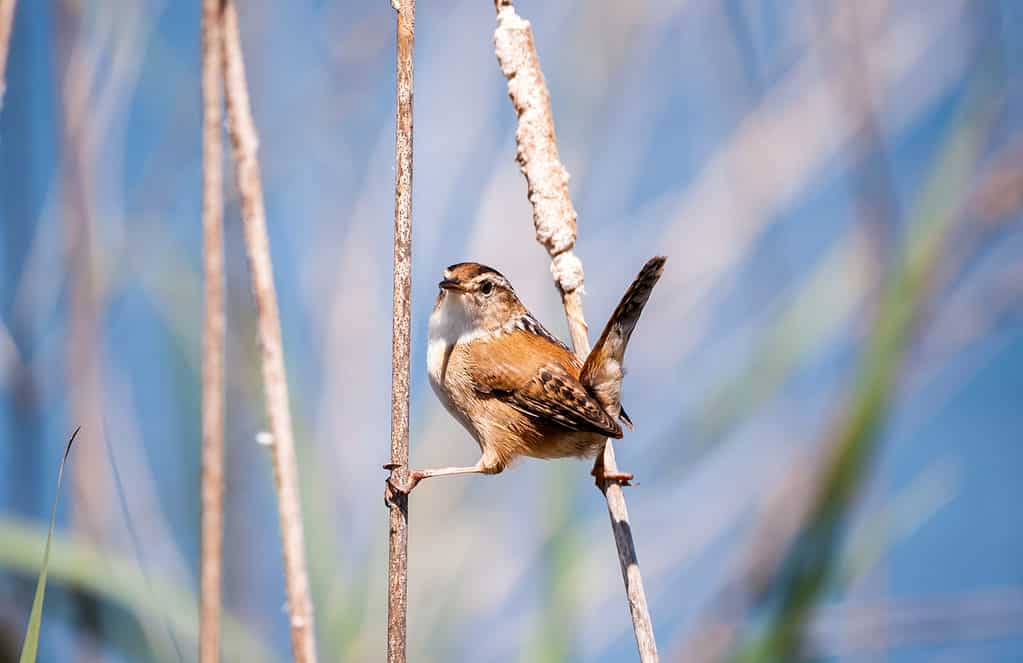
Small and plump, the marsh wren has short wings, a short tail, and a thin bill.
©iStock.com/maiakphotography
Location: The marsh wren lives in fresh and brackish marshes with plenty of cattails and bulrushes. You will find them year-round along the United State’s coastlines and migrating populations further inland.
Appearance: Small and plump, the marsh wren has short wings, a short tail, and a thin bill. This wren is brown above and whitish below, with black streaking and white eyebrow stripes.
Diet: Insects, larvae, and spiders
Calls: Gurgling songs and mechanical chatters
Nest: Woven football-shaped mass anchored to cattails or bulrushes
2. Saltmarsh Sparrow
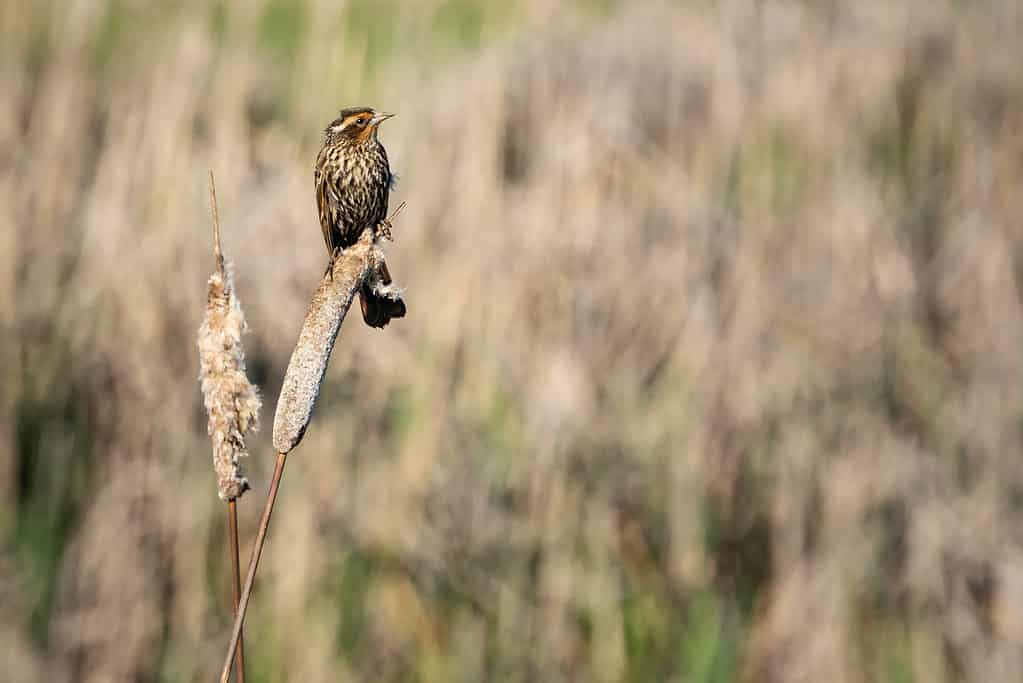
Saltmarsh sparrows produce quiet, wheezy trills.
©iStock.com/wirestock
Location: Saltmarsh sparrows live along the eastern coast and inhabit saltwater marshes. But sometimes they may be found in freshwater adjacent to their regular marsh.
Appearance: This medium-sized bird has a long bill and a short tail. They are heavily streaked brown above and pale below, with orange faces.
Diet: Insects, seeds, spiders, crabs, snails, and other invertebrates
Calls: Quiet, wheezy trills
Nest: Bulky open cup placed on standing plants above the normal tide mark
3. American Oystercatcher
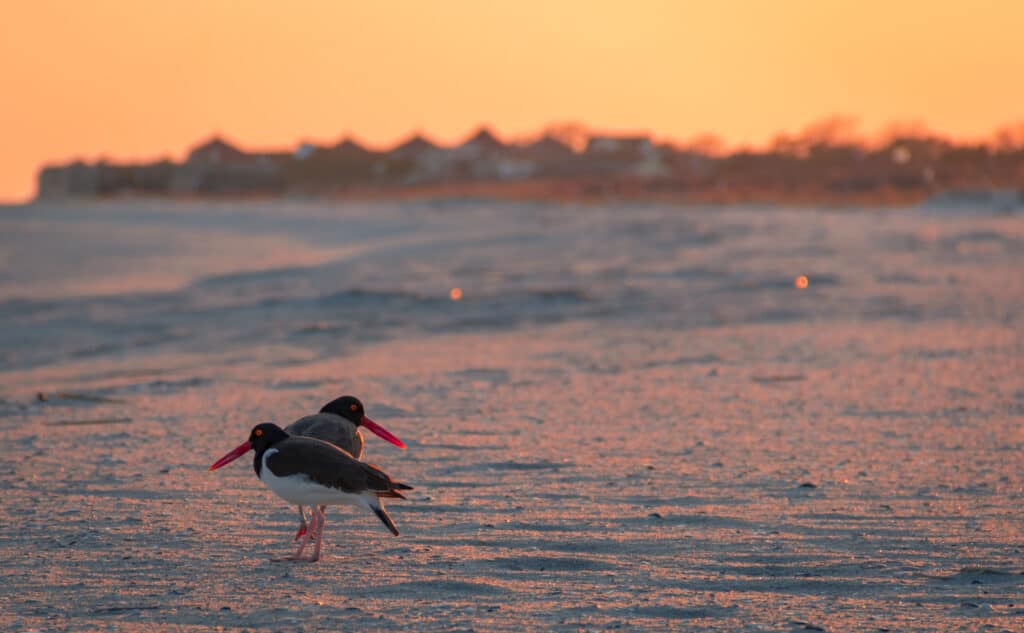
American oystercatchers inhabit salt marshes, tidal flats, and coastal beaches.
©iStock.com/Rabbitti
Location: The American oystercatcher lives year-round along the east coast and the Gulf of Mexico. They inhabit salt marshes, tidal flats, and coastal beaches.
Appearance: The oystercatcher is a large shorebird with a large head, a long bill, and long legs. They have black heads, brown backs and wings, white undersides, red bills, and yellow eyes.
Diet: Shellfish and marine worms
Calls: Sharp, high-pitched “peeps”
Nest: Shallow scrape in the ground on marsh islands or dunes
4. Clapper Rail
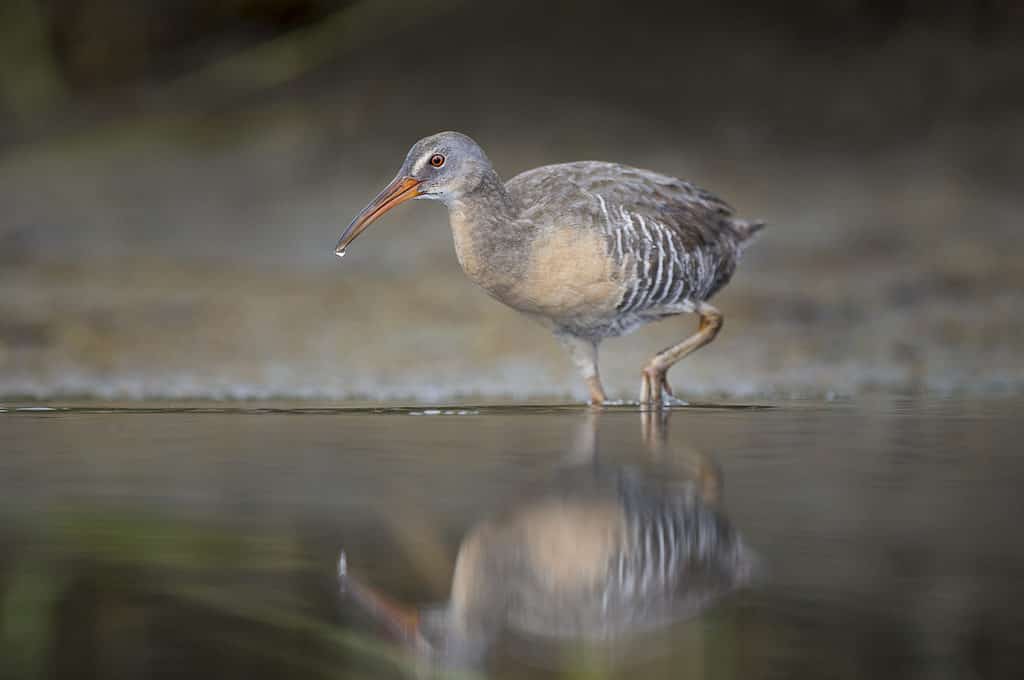
Medium-sized marsh birds clapper rails live in salt marshes.
©iStock.com/ps50ace
Location: Clapper rails live along the coasts in the southeast, where they inhabit salt marshes and shallow mangrove swamps. You can occasionally find them in adjacent brackish marshes.
Appearance: This medium-sized marsh bird has a short tail and a long bill. They appear almost chicken-like and feature streaky brown bodies with orange beaks.
Diet: Crustaceans, insects, fish, and seeds
Calls: Short grunting sounds
Nest: The nest is a cup of plant material located on clumps of marsh grass, often near the bank.
5. Greater Yellowlegs
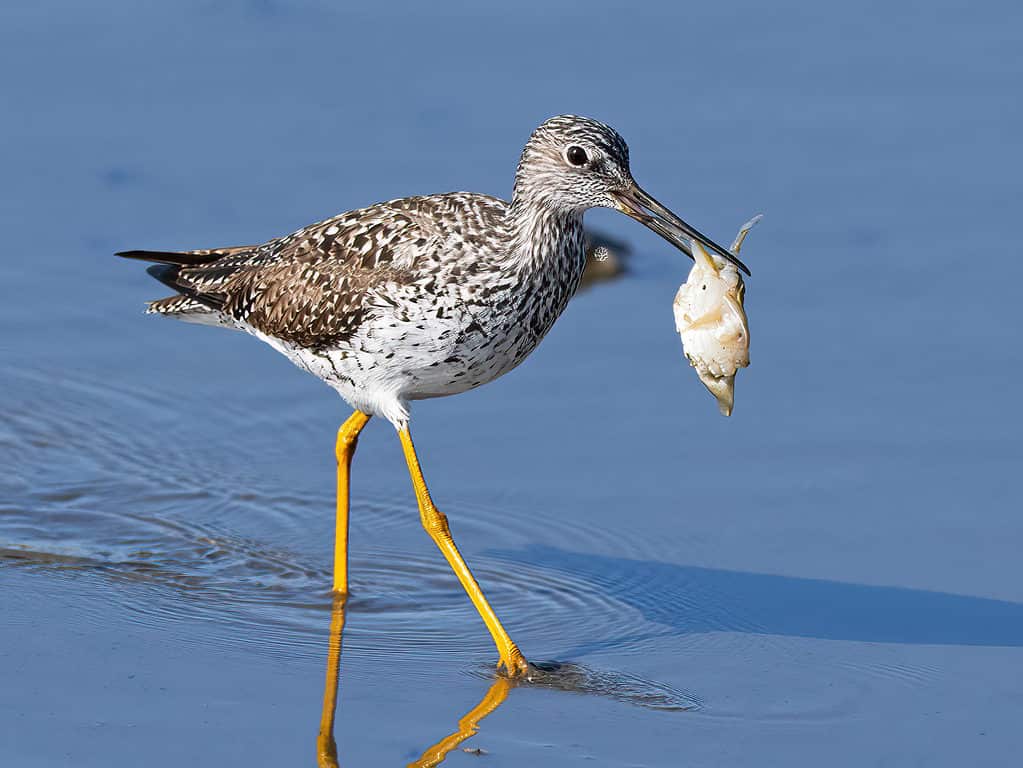
Large shorebirds greater yellowlegs have lanky bodies with long legs, long necks, and thick bills.
©iStock.com/BrianEKushner
Location: The greater yellowlegs is a migratory bird that winters along the United State’s coasts. They inhabit both salt and freshwater marshes, mudflats, streams, ponds, estuaries, and beaches.
Appearance: These large shorebirds have lanky bodies with long legs, long necks, and thick bills. Their plumage is black and white checkered with darker feathers above and white below. Their bright yellow legs are their most notable feature.
Diet: Insects, small fish, crustaceans, and berries
Calls: Musical whistles and “tututu” calls
Nest: A shallow depression in the ground near the water
6. Belted Kingfisher
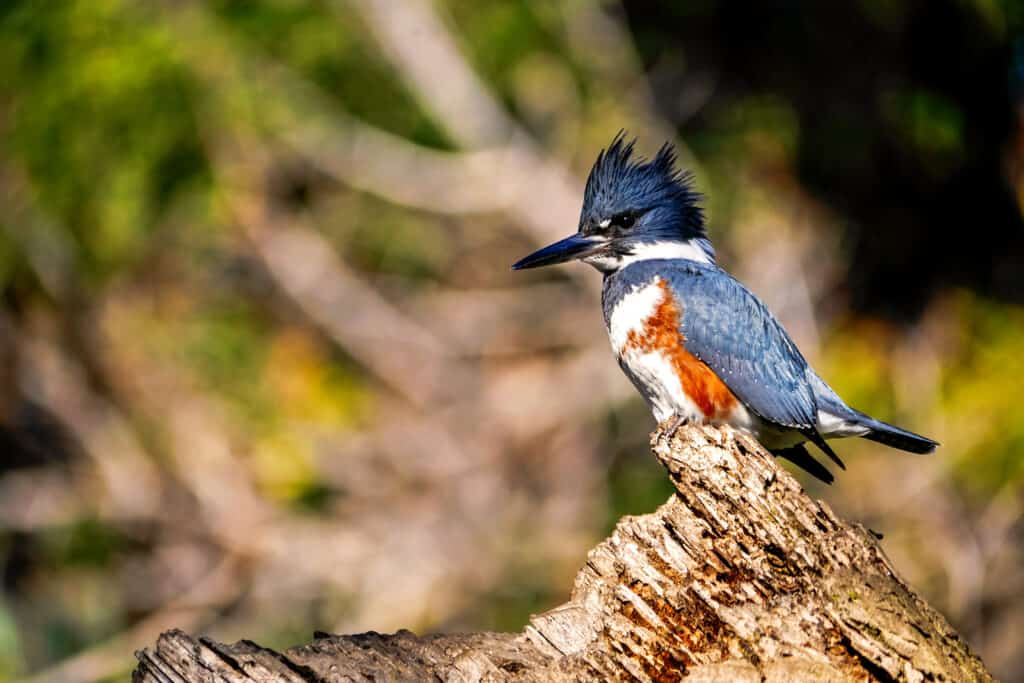
Belted kingfishers live in most aquatic habitats, including marshes.
©Horse Crazy/Shutterstock.com
Location: The belted kingfisher will live in almost any aquatic habitat, such as lakes, bays, coasts, streams, and marshes. They live year-round through most of the country except for the far south, where they only spend winter.
Appearance: They are stocky birds with large heads and shaggy crests. They have bluish-gray heads, backs, and wings and feature white undersides with white collars.
Diet: Fish, aquatic insects, small mammals, lizards, and young birds
Calls: Loud rattles and scream calls
Nest: They nest in tunnels inside steep dirt banks.
7. Osprey

Ospreys catch fish by diving underwater, either foot first or by submerging their whole bodies.
©BlueBarronPhoto/Shutterstock.com
Location: Ospreys are common around salt marshes and estuaries. But you can also find them near lakes, rivers, reservoirs, or anywhere else with water. They live year-round along the coasts in the southeast and spend spring and summers near northern shores in the east and west.
Appearance: They are very large hawks with long legs and narrow wings, often spotted by their “M” shaped wings during flight. Ospreys are brown above and white below. Their heads are white with dark bands.
Diet: Fish, small mammals, birds, and reptiles
Calls: Musical chirping, peeps, and squeals
Nest: Bulky pile of sticks on top of large trees
8. Great Blue Heron

The
great blue heron
is the largest North American heron and lives in fresh or saltwater habitats.
©Brian Lasenby/Shutterstock.com
Location: These highly adaptable birds live in marshes, swamps, tideflats, bays, and shores. You can find them in either salt or freshwater year-round throughout the United States.
Appearance: It is the largest North American heron and features long legs, an S-shaped neck, and a long, thick bill. They are bluish-gray all over with a long black stripe over the eye and an orange or yellow beak.
Diet: Fish, frogs, turtles, snakes, rodents, birds, and insects
Calls: Harsh squawks and croaks
Nest: A platform of sticks in trees or shrubs
9. Snowy Egret
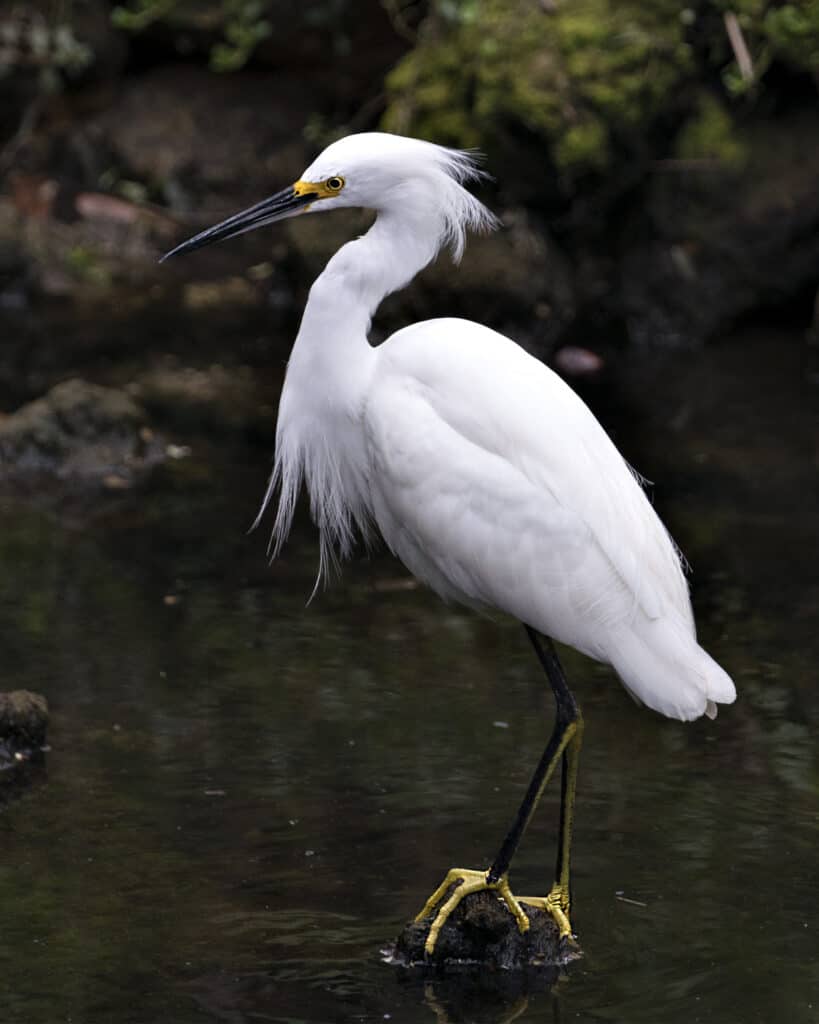
The snowy egret lives on the Gulf Coast year-round.
©iStock.com/Rejean Bedard
Location: Despite its name, the snowy egret lives in marshes, shores, and swamps along the southern coasts. You will find them in either fresh or saltwater habitats near the coasts or further inland in extensive wetland environments.
Appearance: These medium-sized herons have thin legs, long necks, and slender bills. The snowy egret features all-white plumage with black bills, black legs, and yellow feet.
Diet: Fish, insects, crustaceans, lizards, and rodents
Calls: Harsh squawks and gagging croaks
Nest: A platform of sticks in trees or shrubs
10. American Bittern

The American bittern lives in extensive freshwater marshes.
©iStock.com/Marianne Pfeil
Location: The American bittern favors freshwater marshes and reedy lakes. They like shallow wetlands with tall vegetation, like cattails and sedges. They live year-round along the west coast, but you can also find them inland during summer and along the east coast in winter.
Appearance: They are thick, medium-sized herons with short legs, thick necks, and straight bills. They feature streaky brown, buff, and white plumage and can be hard to spot among the marsh vegetation.
Diet: Fish, frogs, aquatic insects, crabs, rodents, and garter snakes
Calls: Low-frequency calls, clacking, and gulping
Nest: Grass platform in thick marsh growth
11. Sandhill Crane
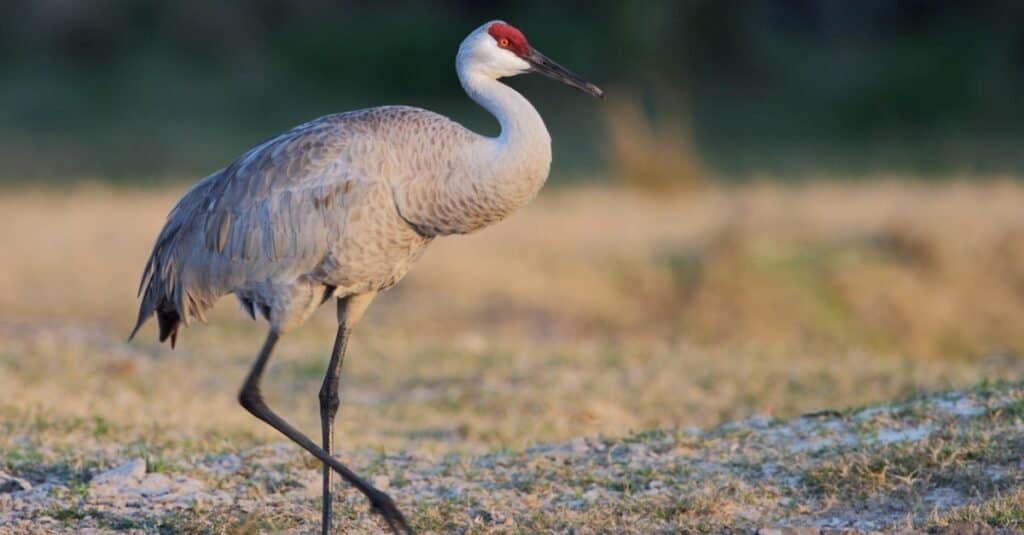
Sandhill cranes breed in Canada, migrate through the central United States, and winter in the southern U.S. and Mexico.
©iStock.com/WMarissen
Location: These birds breed in Canada, migrate through the central United States, and winter in the southern U.S. and Mexico. Look for them in marshes, fields, prairies, and tundra.
Appearance: Sandhill cranes are tall, bulky birds with long legs, broad wings, and slender necks. They are slate gray with black legs and red skin on their crowns.
Diet: Insects, aquatic plants, rodents, reptiles, baby birds, seeds, and berries
Calls: Loud rattling calls
Nest: Floating plant mound anchored to vegetation
12. Black-Crowned Night Heron

The black-crowned night heron has white feathers on its breast along with greyish black wings.
©Nycticorax nycticorax/Shutterstock.com
Location: The black-crowned night heron is found in salt and freshwater aquatic habitats, such as marshes, shores, rivers, swamps, rice fields, and tide flats. They live year-round along the coasts and breed inland.
Appearance: These small, thick herons have large heads, thick necks, and heavy bills. They are light gray with black backs and black crowns. They also have yellow legs, black bills, and red eyes.
Diet: Fish, crustaceans, aquatic insects, frogs, snakes, rodents, and carrion
Calls: Loud barking squawks
Nest: Stick platforms placed on the ground or in trees and shrubs
Summary of 12 Impressive Types of Marsh Birds
Here’s a recap of the dozen fascinating birds we looked at that can be found in marsh habitats.
| Number | Bird Species | Habitat |
|---|---|---|
| 1 | Marsh Wren | Fresh and brackish marshes along and inland of the United State’s coastlines |
| 2 | Saltmarsh Sparrow | Along the eastern coast in saltwater marshes; sometimes found in freshwater adjacent to their regular marsh |
| 3 | American Oystercatcher | Salt marshes, tidal flats, and coastal beaches along the east coast and the Gulf of Mexico |
| 4 | Clapper Rail | Salt marshes and shallow mangrove swamps live along coasts in the southeast U.S.; occasionally found in adjacent brackish marshes |
| 5 | Greater Yellowlegs | Salt and freshwater marshes, mudflats, streams, ponds, estuaries, and beaches during winters along U.S. coasts |
| 6 | Belted Kingfisher | Lakes, bays, coasts, streams, and marshes in most of the U.S. |
| 7 | Osprey | Salt marshes and estuaries; near lakes, rivers and reservoirs along coasts |
| 8 | Great Blue Heron | Saltwater or freshwater marshes, swamps, tideflats, bays, and shores in the U.S. |
| 9 | Snowy Egret | Marshes, shores, and swamps along southern coasts; fresh or saltwater habitats near coasts or further inland in extensive wetland environments |
| 10 | American Bittern | Freshwater marshes, reedy lakes, and shallow wetlands |
| 11 | Sandhill Crane | Marshes, fields, prairies, and tundra |
| 12 | Black-Crowned Night Heron | Salt and freshwater aquatic habitats, such as marshes, shores, rivers, swamps, rice fields, and tide flats |
The photo featured at the top of this post is © iStock.com/ps50ace
Sources
Thank you for reading! Have some feedback for us? Contact the AZ Animals editorial team.







